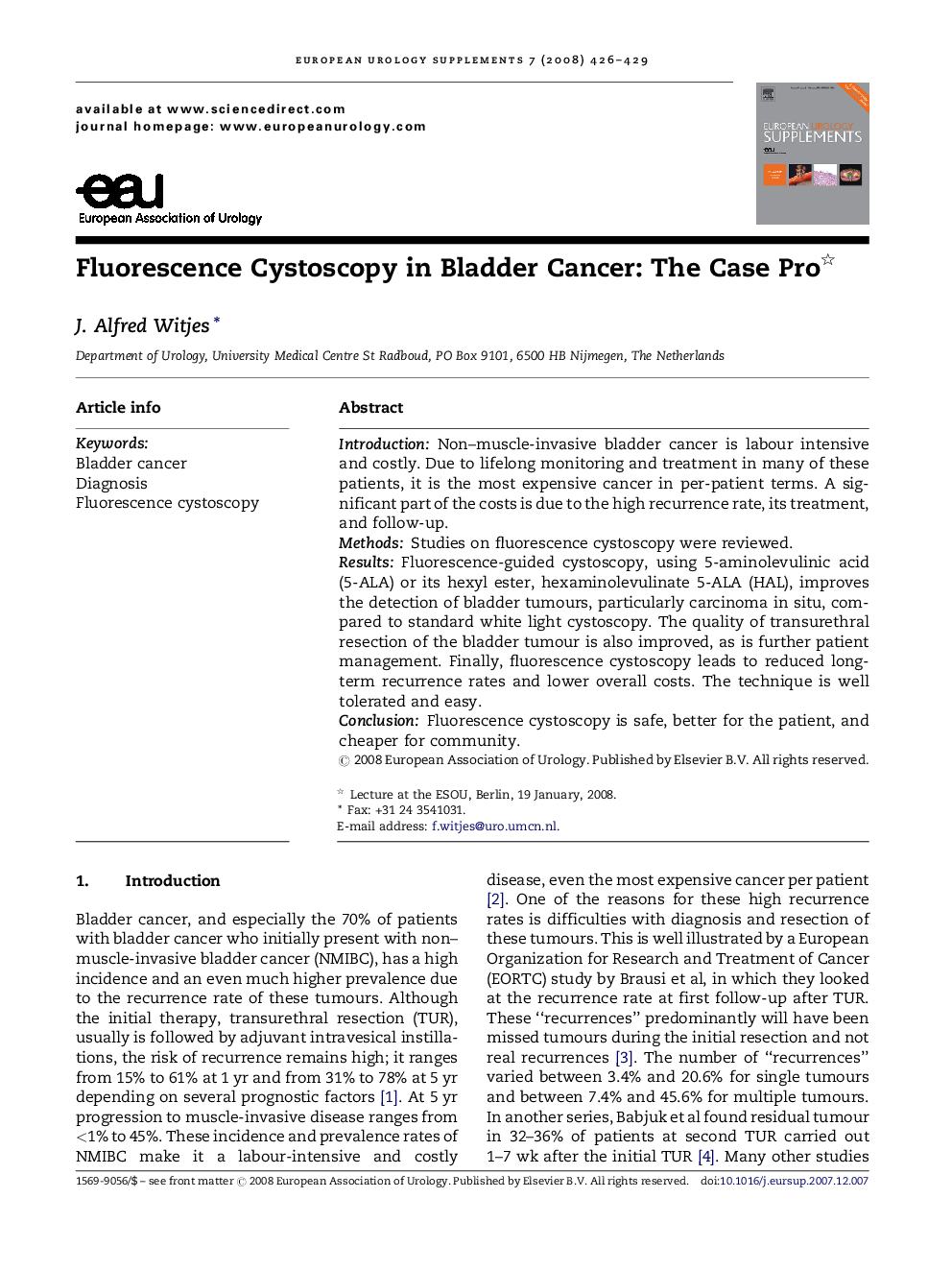| Article ID | Journal | Published Year | Pages | File Type |
|---|---|---|---|---|
| 3927145 | European Urology Supplements | 2008 | 4 Pages |
IntroductionNon–muscle-invasive bladder cancer is labour intensive and costly. Due to lifelong monitoring and treatment in many of these patients, it is the most expensive cancer in per-patient terms. A significant part of the costs is due to the high recurrence rate, its treatment, and follow-up.MethodsStudies on fluorescence cystoscopy were reviewed.ResultsFluorescence-guided cystoscopy, using 5-aminolevulinic acid (5-ALA) or its hexyl ester, hexaminolevulinate 5-ALA (HAL), improves the detection of bladder tumours, particularly carcinoma in situ, compared to standard white light cystoscopy. The quality of transurethral resection of the bladder tumour is also improved, as is further patient management. Finally, fluorescence cystoscopy leads to reduced long-term recurrence rates and lower overall costs. The technique is well tolerated and easy.ConclusionFluorescence cystoscopy is safe, better for the patient, and cheaper for community.
